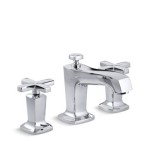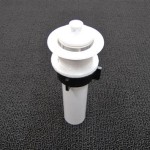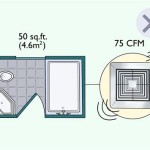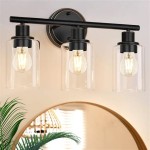Do Bed Bugs Go In Bathrooms? Understanding Bed Bug Behavior and Habitat
Bed bugs are notorious household pests primarily known for infesting mattresses and bedding. However, understanding the full extent of their potential habitats is crucial for effective prevention and control. This article delves into the question of whether bed bugs venture into bathrooms, exploring the factors that influence their movement and survival, and providing insights into where to focus inspection efforts.
The common perception of bed bugs confines them to bedrooms, due to the proximity to their primary food source: human blood. Bed bugs are nocturnal creatures, typically emerging from their hiding places to feed while humans are asleep. This behaviour naturally concentrates their activity around beds, couches, and other areas where people spend extended periods of rest. However, their presence is not solely limited to these locations.
The question of whether bed bugs infest bathrooms is more nuanced than a simple yes or no. While the bathroom is not the *ideal* environment for bed bugs, certain conditions can make it a temporary refuge or even a more permanent dwelling place. Understanding these conditions is paramount to understanding the possible presence of bed bugs in unconventional locations.
Key Point 1: Environmental Factors Influencing Bed Bug Habitat
Bed bugs are highly susceptible to environmental conditions, particularly humidity and temperature. Bathrooms are, by nature, more humid than other rooms in the house due to showers, baths, and sinks. This humidity can be both a draw and a deterrent for bed bugs. While bed bugs prefer moderate humidity levels, excessive moisture can be detrimental to their survival.
High humidity levels can promote the growth of mold and mildew, which can create an unfavorable environment for bed bugs. Conversely, extremely dry environments can also be problematic, leading to desiccation and death. Therefore, the specific humidity levels within a bathroom, and whether it remains consistently high or fluctuates, impacts the likelihood of bed bug presence.
Temperature also plays a vital role. Bed bugs thrive in temperatures between 70°F and 80°F (21°C and 27°C). Bathrooms, especially those with poor ventilation, can sometimes reach these temperatures, particularly during or after showers or baths. However, the frequency and duration of these temperature spikes are crucial factors. Consistent warmth, paired with moderate humidity, could make a bathroom more attractive.
Furthermore, the availability of harborage is essential. Bed bugs prefer dark, secluded areas to hide during the day. Bathrooms with cracks in the walls, loose tiles, spaces behind baseboards, or cluttered storage areas provide potential hiding spots. Without these hiding places, bed bugs are less likely to establish themselves in a bathroom, even if humidity and temperature are favorable.
The presence of a food source, even an indirect one, can also influence bed bug location. While bed bugs primarily feed on human blood, they can survive for extended periods without feeding. In a bathroom, they might be drawn to traces of human activity, such as shed skin cells or even residual odors. While not a direct food source, these elements can act as attractants, particularly if the bathroom is located near a more heavily infested area.
Key Point 2: Bed Bug Mobility and Infestation Spread
Bed bugs are not known for their long-distance travel capabilities. They typically move by crawling, and are not capable of flying or jumping. This means that bed bugs are most likely to inhabit areas that are in close proximity to their initial infestation source. In the context of a bathroom, this suggests that bed bugs are more likely to be found there if there is an existing infestation in an adjacent bedroom or hallway.
The method by which bed bugs are introduced to a house also influences their distribution. Bed bugs are often brought into homes through luggage, used furniture, or clothing. If contaminated items are placed in or near a bathroom, the likelihood of bed bugs establishing themselves in that room increases. For example, if a suitcase containing bed bugs is left in a hallway closet near the bathroom, the bugs might migrate to the bathroom seeking harborage.
The severity of an existing infestation is a major factor. In the early stages of an infestation, bed bugs are typically concentrated in areas closest to the primary sleeping area. As the infestation grows, the bed bugs will begin to disperse to other areas of the house in search of new hiding places. This dispersal can lead them to bathrooms, especially if the initial infestation is left untreated for an extended period.
The architecture of the building can also facilitate bed bug movement. Bed bugs can travel through cracks in walls, plumbing chases, and electrical wiring conduits. If these pathways connect a bedroom to a bathroom, it makes it easier for bed bugs to migrate between the two rooms. In apartment buildings, bed bugs can even travel between units through shared walls or plumbing systems.
Human behavior also plays a role in bed bug spread. People can inadvertently transport bed bugs on their clothing or belongings when moving between rooms. If someone sits on an infested bed and then enters the bathroom, they might carry bed bugs with them. This type of accidental transport can contribute to the spread of bed bugs throughout the house.
Key Point 3: Identifying and Addressing Bed Bugs in Bathrooms
Identifying bed bugs in a bathroom requires a thorough inspection. Due to the limited food source, infestations in bathrooms are often smaller and more difficult to detect than those in bedrooms. Look for signs of bed bugs such as live bugs, shed skins (exuviae), fecal spots (small dark stains), and blood stains.
Common hiding places in bathrooms include cracks in tiles, behind loose baseboards, under sinks, and within storage containers. Pay particular attention to areas near plumbing fixtures, as these areas often provide access to wall voids and other hidden spaces. Checking behind toilets and under sinks is crucial.
Using a flashlight and magnifying glass can aid in the inspection process. Bed bugs are small and often hide in dark, narrow spaces. Thoroughly examining these areas with proper tools increases the chances of detecting their presence. It is important to check grout lines and any chipped or cracked porcelain.
Treating bed bugs in bathrooms requires a similar approach to treating them in other areas of the house. Focus on treating the identified hiding places with appropriate insecticides. Ensure the products used are designed for use in bathrooms and are safe to apply in areas where moisture is present. Careful application is essential to avoid contaminating water sources or creating health hazards.
Professional pest control services are often the most effective way to eliminate bed bugs, especially in complex environments like bathrooms where hiding places can be difficult to reach. Pest control professionals have the experience and equipment necessary to locate and eradicate bed bugs, even in challenging situations. They can also provide guidance on preventing future infestations.
Preventative measures are crucial to avoid future infestations. Sealing cracks and crevices in the bathroom can eliminate potential hiding places. Maintaining a clean and clutter-free bathroom reduces the availability of harborage. Regularly inspecting the bathroom for signs of bed bugs can help detect infestations early before they become widespread.
Washing and drying towels and bath mats frequently can also help prevent bed bugs from establishing themselves in the bathroom. The high heat of the dryer can kill bed bugs and their eggs. Vacuuming regularly, especially around baseboards and under sinks, can also remove bed bugs and their shed skins.
Ultimately, while bathrooms are not the primary habitat for bed bugs, they can become infested under certain circumstances. Understanding the factors that influence bed bug behavior and implementing preventative measures are essential to protecting homes from these persistent pests. Vigilance in identifying and addressing potential hiding places is key to maintaining a bed bug-free environment.

Bed Bugs 101

How To Tell If You Have Bed Bugs While Traveling And What Kills Them

Bed Bug On Bathroom Floor Of Candlewood Suites Durham Rtp By Ihg Tripadvisor

Bathroom Bugs Identification Guide How To Get Rid Of Each Type A Z Animals

Bathroom Bugs Identification 15 You Ll See In A

How Do You Know If Have Bed Bugs Gregory Pest

Tips For Preventing The Spread Of Bed Bugs Nc State Extension Publications

Do Bed Bugs Stay On Your What S The Real Truth
Here Are The Best Ways To Avoid Bed Bugs Business Insider

Diy Instructions To Treat Ensemble







